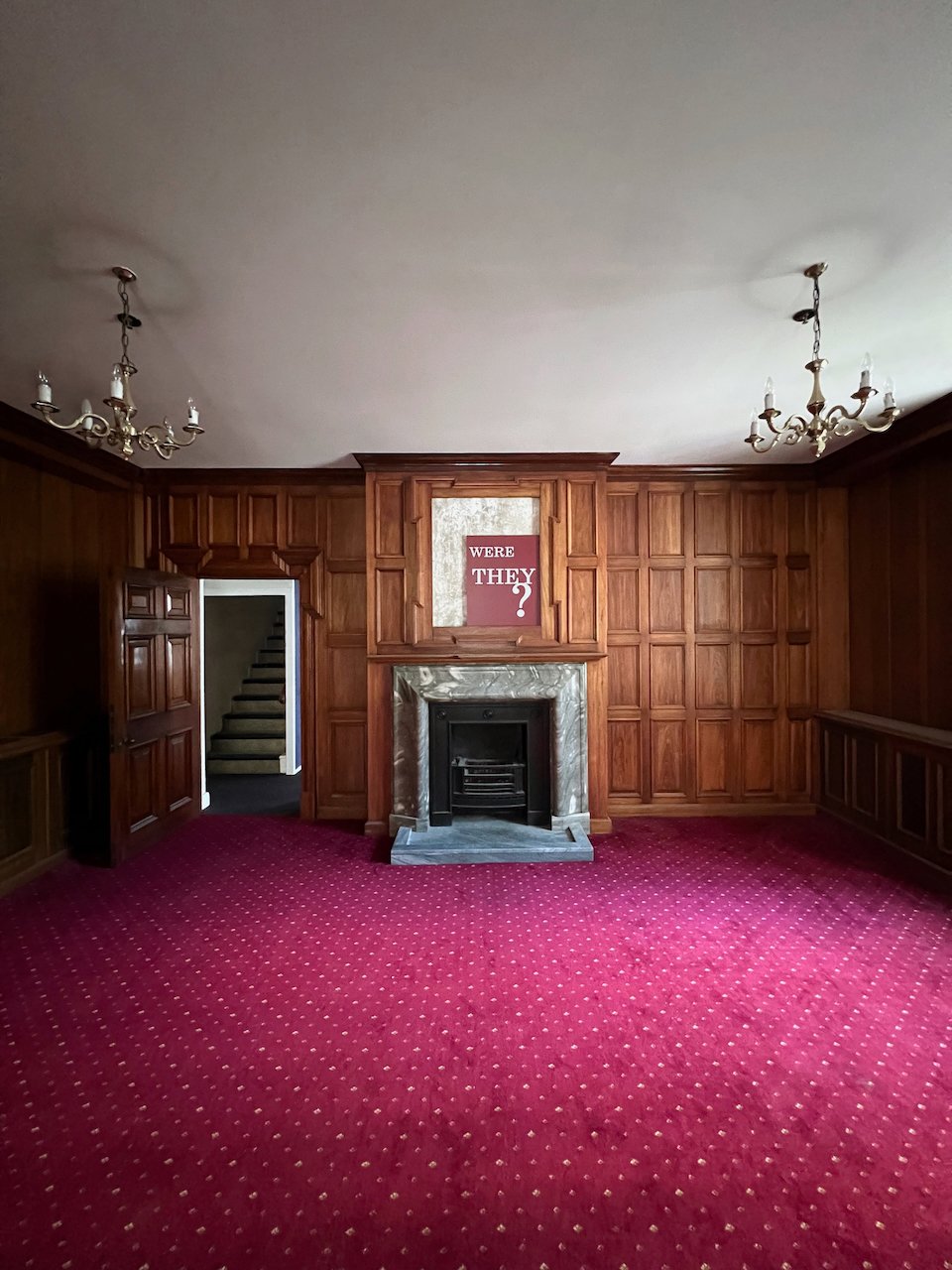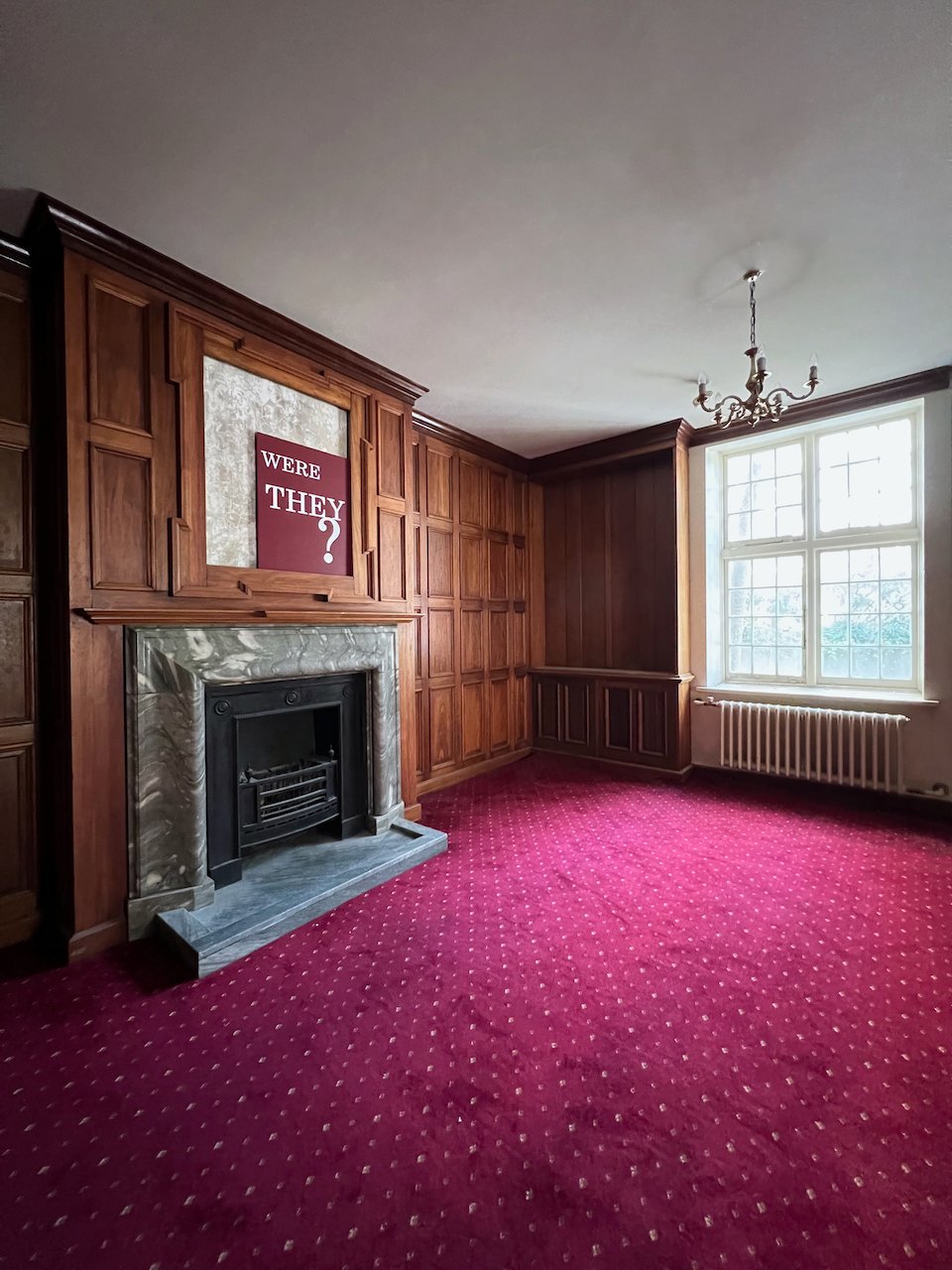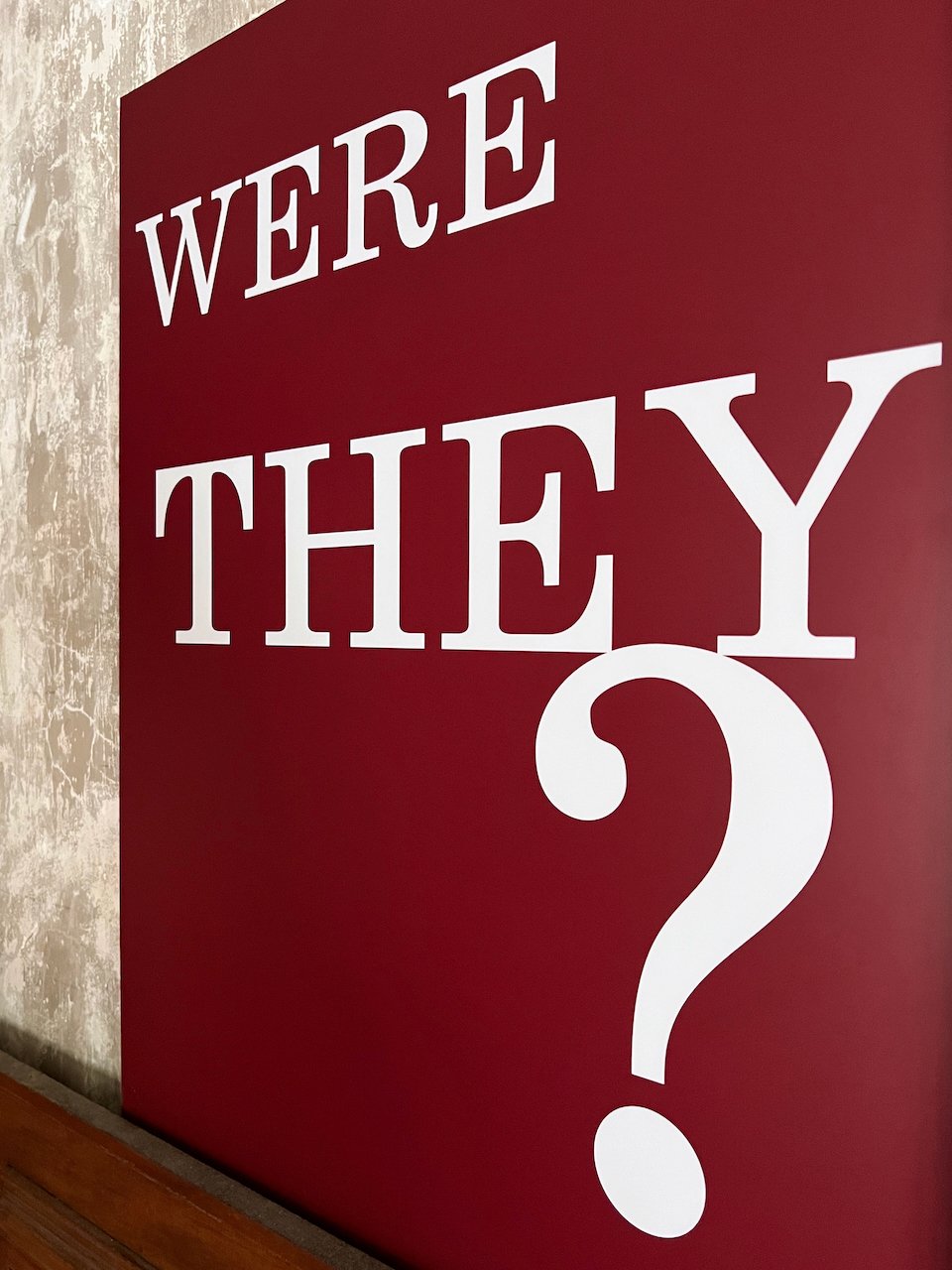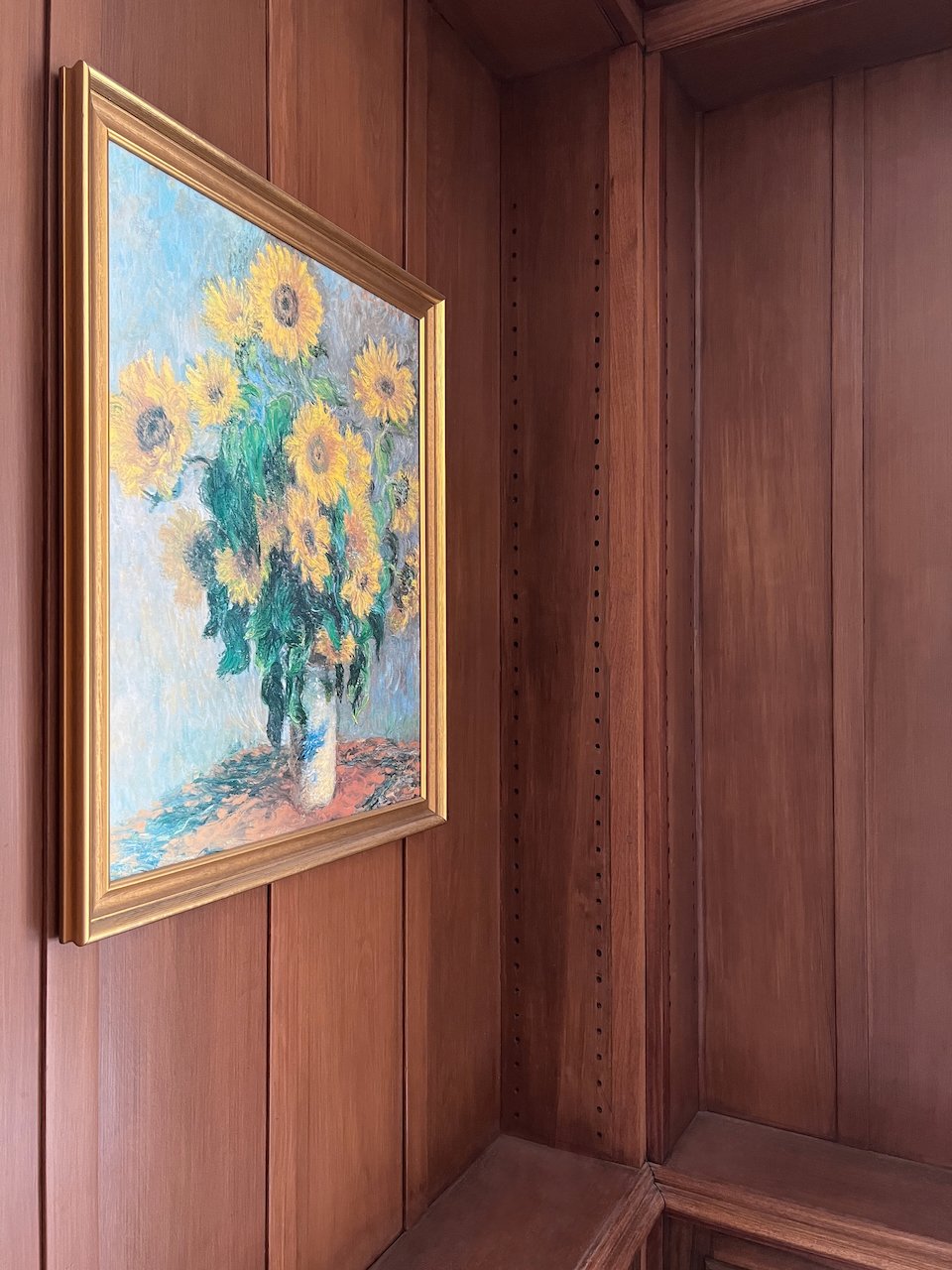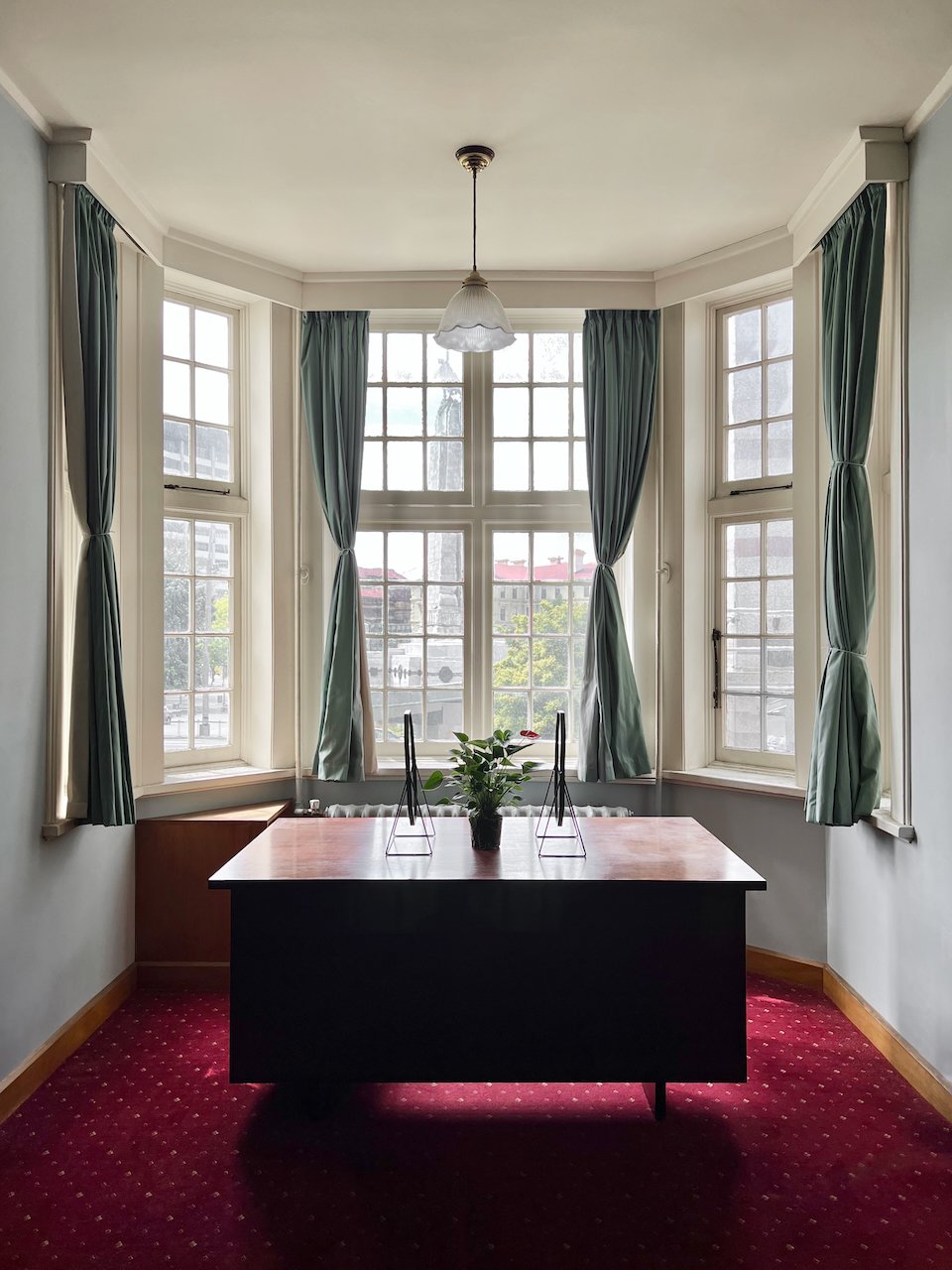volumes
Turnbull House, Wellington, New Zealand, 2022.
Turnbull House was built in 1916 as the residence for Alexander Horsburgh Turnbull and his book collection. Turnbull died in 1918 and bequeathed his collection of approximately 55,000 books to the public, a collection that now sits in the National Library of New Zealand. Turnbull’s sexual orientation has been the topic of many researchers, some suggesting he was gay, others suggesting he wasn’t gay. It is this ongoing debate that inspired this body of work.
Thanks to Turnbull House, a property cared for by Heritage New Zealand Pouhere Taonga, for supporting this work. At the time of this project (2022), Turnbull House was closed to the public in preparation for seismic strengthening. In consideration of the building’s earthquake-prone status and health and safety requirements, the access provided to Turnbull House was restricted and time-limited. Turnbull House is a Category 1 historic place on the New Zealand Heritage List/Rārangi Kõrero and part of the Rainbow List Project managed by Heritage New Zealand Pouhere Taonga.
Volumes is a body of work Novak developed with local LGBTQI+ communities in Turnbull House including:
Were They?, Ground Floor Library.
Physique Pictorial, Ground Floor Library.
In the Wake of Freedom, Ground Floor Study.
In Perpetuity, Ground Floor Dining Room.
To Bathe, First Floor Main Bathroom.
The Glory, First Floor Guest Bathroom.
Pole Stars, First Floor Stairway.
In Arms, Second Floor Library.
Safe Light, Third Floor Library.
1. WERE THEY?
Shannon Novak, Ground Floor Library, Turnbull House, Wellington, New Zealand, 2022.
This room has a blank wall where Turnbull’s painted portrait used to hang. This work saw the installation of a new portrait with the words WERE THEY? This refers to the debate around Turnbull’s sexual orientation but extends to other historical figures currently under debate in terms of their relationship (if any) to LGBTQI+ communities.
The red background matches the red background used on the cover of the first book in Turnbull’s collection, The King Country; Or, Explorations in New Zealand by J. H. Kerry-Nicholls. The font also comes from this book.
2. Physique Pictorial
Shannon Novak, Ground Floor Library, Turnbull House, Wellington, New Zealand, 2022.
The 10th of March 1965 marked the first time the Indecent Publications Tribunal had ruled any publication as indecent on the grounds of “homosexuality”. Five publications were intercepted by customs enroute to a Wellington bookshop, four of which were classified by the tribunal as indecent including:
Physique Pictorial, February 1963, Volume 13, No. 3
Modern Adonis, No. 25
Male Classics, No. 30
Male Classics Annual, 1964
The tribunal identified these publications as “designed to appeal to or encourage homosexuality, which in New Zealand is a criminal offence”. This work involved the digital restoration and editing of each publication cover where available. Text elements were removed (e.g. titles) and a fade to black applied in reference to LGBTQI+ censorship. One cover could not be located at the time of this project so a black page takes its place.
The status for each publication at the time of this project remained “indecent” within the meaning of the Indecent Publications Act 1963. As part of this work an application to have this classification decision reconsidered was submitted to the Classification Office in New Zealand. Updates will be mentioned here.
On the opposite side of the room, a framed print hangs of Bouquet of Sunflowers (1881) by Claude Monet. Sunflowers are known for heliotropism where the flowers turn to track the movement of the sun. It is this act of looking towards the light that symbolises the work being done to declassify select publications and ultimately prevent censorship of LGBTQI+ communities.
3. IN THE WAKE OF FREEDOM
Shannon Novak, Ground Floor Study, Turnbull House, Wellington, New Zealand, 2022.
On the 11th of September 1986 there was an arson attack on the Lesbian and Gay Rights Resource Centre (LGRRC) in Wellington. This took place the month after homosexual acts were legalised in New Zealand and resulted in the damage and loss of LGBTQI+ heritage.
This work reproduces a photo taken by David Hindley. The photo shows LGRRC Administrator Phil Parkinson onsite at LGRRC during the aftermath of the fire. The Beehive building can be seen through the windows in the room behind the photo. This building is the Executive Wing of New Zealand parliament buildings in Wellington. The Prime Minister and Cabinet Ministers have offices here and it’s where the Cabinet meets.
4. In Perpetuity
Shannon Novak, Ground Floor Dining Room, Turnbull House, Wellington, New Zealand, 2022.
The work explores the censorship of LGBTQI+ communities past, present, and future. Two mirrors face each other creating an infinity mirror effect. Zantedeschia (Calla Lily) is placed between the mirrors. Zantedeschia represents LGBTQI+ bodies, the plant noted to resemble male and female genitalia simultaneously. The repeated reflections represent the seemingly infinite censorship of these bodies by external forces.
The energy in each new reflection is partly absorbed into the mirror, therefore the reflections appear dimmer as they move inwards. This echoes the dimming light or energy in LGBTQI+ bodies as they are subjected to repeated censorship.
5. To Bathe
Shannon Novak, First Floor Main Bathroom, Turnbull House, Wellington, New Zealand, 2022.
Four Zantedeschia (Calla Lily) form a line down the centre of Alexander Turnbull’s private bathroom. Four towel rails are installed, two on each wall. Zantedeschia represents LGBTQI+ bodies, the plant noted to resemble male and female genitalia simultaneously.
This work creates a space of healing in Turnbull House for LGBTQI+ communities. Just as the plants are removed from their pots, bodies are taken from heteronormative forces and given the freedom to grow organically. They sit bathing in the light of progress with no intention of losing this light once they move on from this space, just as empty towel rails offer no way to dry off nourishing water.
6. The Glory
Shannon Novak, First Floor Guest Bathroom, Turnbull House, Wellington, New Zealand, 2022.
LED lights are installed inside an existing hole created for an asbestos survey in a bathroom wall. This hole doesn’t go all the way through, rather, hits a wall half way to create an enclosed space. The work takes cues from a role of glory holes in the past as a way to avoid identification and arrest during times homosexuality was illegal. To counter this, some holes were physically blocked and weaponised to entrap people. It exemplifies the ongoing tension between freedom and regulation for LGBTQI+ people.
Pink light offers hope. It illuminates what otherwise may be dark and inactive. It symbolises unbreakable resilience in working to take down walls and create pathways to liberation.
7. Pole Stars
LGBTQI+ communities in Wellington and Shannon Novak, First Floor Stairway, Turnbull House, Wellington, New Zealand, 2022.
This work invited local LGBTQI+ people to share a text that was significant to them in supporting their journey as LGBTQI+ people in Wellington.
8. In Arms
Shannon Novak, Second Floor Library, Turnbull House, Wellington, New Zealand, 2022.
Turnbull House was deemed earthquake prone and at the time of this project (2022) was undergoing strengthening. This helps ensure the preservation of the building and life in the event of a serious earthquake. This work links the strengthening of Turnbull House with the strengthening of local (Wellington) LGBTQI+ communities through two local icons; Carmen Rupe and Chrissy Witoko.
Temporary shear walls and tie rods were installed inside Turnbull House as part of the strengthening plan. The names Carmen and Chrissy are installed on a tie rod designed to help the building withstand seismic activity. Like tie rods, they tied elements (LGBTQI+ people) together to prevent them from falling apart during times of disaster.
9. Safelight
Shannon Novak, Third Floor Library, Turnbull House, Wellington, New Zealand, 2022.
LED lights are installed in what is now an attic, accessed from a hatch at the top of a stack stair. From below it appears as a glowing portal. Inside, the entire space is lit red. This work references Carmen’s Coffee Lounge operated by Wellington LGBTQI+ icon Carmen Rupe, a safe place for LGBTQI+ communities pre legalisation of homosexuality in New Zealand. Like a photographic darkroom with a safelight protecting photographic material from exposure, this space provided safety for LGBTQI+ communities from the outside world.
The attic structure is a large triangular prism. White light disperses into a colour spectrum when it passes through a triangular prism which speaks to the opening of minds Carmen’s Coffee Lounge nurtured.
